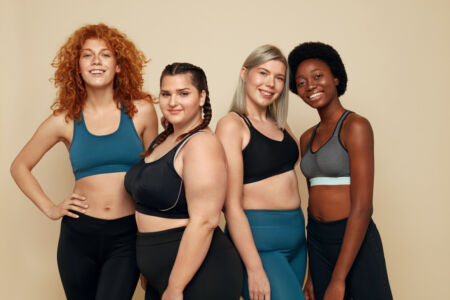
May is Women’s Health Month. This annual observance is dedicated to educating both women and men about unique health matters facing women—and empowering women to make their health a priority. We spoke to Director of Clinical Affairs, Theresa M. Soto, MD, FACOG, FACS, RPVI, about the significance of vein health to a woman’s overall health profile. Dr. Soto is certified by the American Board of Obstetrics and Gynecology and specializes in venous and lymphatic medicine.
Dr. Soto defines venous insufficiency as improper functioning of the vein valves in the legs that cause swelling, leg pain, aching, throbbing, heaviness, fatigue, and large visible veins (i.e., varicose veins). If left untreated, it can lead to skin problems such as color changes, stasis dermatitis (skin inflammation in the lower legs caused by fluid buildup), thinning and flaking, and ulcers.
Normally, the valves in the vein keep blood moving back toward the heart, working against gravity. When these valves fail, one gets backflow, known as “reflux.” Dr. Soto compares it to gastric reflux, where the acids back up in the wrong direction into the esophagus; venous reflux is an abnormal reversal of blood flow through the valves.
According to Dr. Soto, an estimated 40 percent of the US population has chronic venous insufficiency. Twenty to 30 million Americans have varicose veins. It occurs more frequently in people over the age of 50 and more often in women than in men.
While women can develop vein disease in their thirties and forties, they often don't understand the consequences of vein disorders for their overall health. Therefore, they often don't seek proper medical attention. By age 50, 41 percent of women will suffer from varicose veins. By their sixties, 45 percent of men will be burdened by venous insufficiency.
Two of the most common causes of venous insufficiency—aging and heredity—are shared between the sexes. Standing and sitting for a prolonged time is also associated with developing vein disease and equally affects women and men.
Causes of vein disorders that affect women more than men include:
Dr. Soto advises against evaluating a woman during pregnancy for venous insufficiency because changes that occur during pregnancy have been found to return to near normal after the pregnancy. “The vein dilation you see during pregnancy will regress a bit to a new baseline. With each additional pregnancy, the new baseline becomes further away from normal valve function for most women” says Dr. Soto. This is why symptoms will gradually increase with each pregnancy. She emphasizes that compression duplex screening should not be done on a pregnant woman because it can cause dizziness, change blood pressure, and make a woman feel faint, and increase fall risk.
It is recommended that a new mom be screened about twelve weeks after delivery. If she is found to be positive for venous insufficiency, it is beneficial to treat her before she becomes pregnant again so that her leg health can be improved. She will then feel more comfortable during her next pregnancy. Without treatment, a woman’s leg condition can worsen with each pregnancy until the discomfort becomes unbearable. Large varicosities (enlarged veins) with pregnancy increase the risk for blood clot in the leg.
Three or more pregnancies tend to “tip the needle” toward venous insufficiency, adds Dr. Soto.
Like getting wrinkles in the skin, developing vein problems progresses with age, says Dr. Soto. We lose collagen (which is why we get wrinkles). Our skin, including leg skin, becomes lax with age from lack of support tissue. She explains that because humans are creatures that walk upright on two legs, our venous return system spends a lifetime fighting against gravity, too. The leg valves that have been working mightily to overcome gravity for decades "becomes a less efficient system," says Dr. Soto.
Even though vein disease is "essentially hereditary," there are measures that a woman can take to maintain overall good health and reduce risk. These include:
Dr. Soto emphasizes that women must be mindful of their body and make their primary care physician (PCP) or other healthcare professionals aware of any concerns. She recommends that women "take charge of their healthcare by bringing up the topic of how their legs feel and look," even if the healthcare professional doesn't ask. She adds that women should ask for a recommendation for a vein specialist. By making this request a habit, PCPs will remember to make vein disease a part of the routine check-up. Patients do not need a referral to see a Center for Vein Restoration physician, says Dr. Soto.
Lastly, Dr. Soto wants women to know that “Just because vein disease is common, it is not normal. Women must seek the care of a vein disease expert to diagnose, and if necessary, treat their vein disease” as soon as symptoms develop.
The specialists at the Center for Vein Restoration can thoroughly diagnose your condition and provide an individualized treatment based on your preferences and health status. Treatments are quick, minimally invasive, require little downtime, and are covered by major insurances—including Medicare and Medicaid.
Call 240-965-3915 or visit centerforvein.com to schedule your appointment.